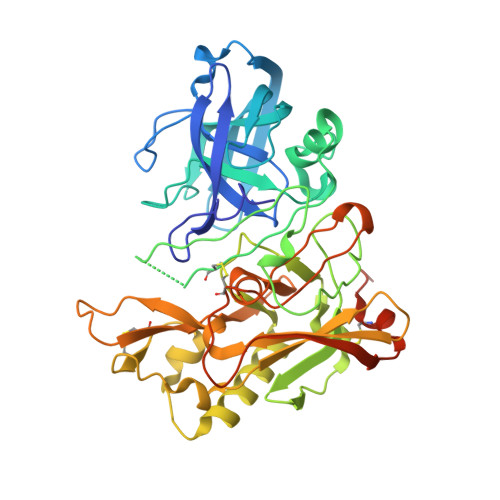Molecular Shape and Medicinal Chemistry: A Perspective.
Nicholls, A., Mcgaughey, G.B., Sheridan, R.P., Good, A.C., Warren, G., Mathieu, M., Muchmore, S.W., Brown, S.P., Grant, J.A., Haigh, J.A., Nevins, N., Jain, A.N., Kelley, B.(2010) J Med Chem 53: 3862
- PubMed: 20158188
- DOI: https://doi.org/10.1021/jm900818s
- Primary Citation of Related Structures:
2WJO - PubMed Abstract:
The eight contributions here provide ample evidence that shape as a volume or as a surface is a vibrant and useful concept when applied to drug discovery. It provides a reliable scaffold for "decoration" with chemical intuition (or bias) for virtual screening and lead optimization but also has its unadorned uses, as in library design, ligand fitting, pose prediction, or active site description. Computing power has facilitated this evolution by allowing shape to be handled precisely without the need to reduce down to point descriptors or approximate metrics, and the diversity of resultant applications argues for this being an important step forward. Certainly, it is encouraging that as computation has enabled our intuition, molecular shape has consistently surprised us in its usefulness and adaptability. The first Aurelius question, "What is the essence of a thing?", seems well answered, however, the third, "What do molecules do?", only partly so. Are the topics covered here exhaustive, or is there more to come? To date, there has been little published on the use of the volumetric definition of shape described here as a QSAR variable, for instance, in the prediction or classification of activity, although other shape definitions have been successful applied, for instance, as embodied in the Compass program described above in "Shape from Surfaces". Crystal packing is a phenomenon much desired to be understood. Although powerful models have been applied to the problem, to what degree is this dominated purely by the shape of a molecule? The shape comparison described here is typically of a global nature, and yet some importance must surely be placed on partial shape matching, just as the substructure matching of chemical graphs has proved useful. The approach of using surfaces, as described here, offers some flavor of this, as does the use of metrics that penalize volume mismatch less than the Tanimoto, e.g., Tversky measures. As yet, there is little to go on as to how useful a paradigm this will be because there is less software and fewer concrete results.Finally, the distance between molecular shapes, or between any shapes defined as volumes or surfaces, is a metric property in the mathematical sense of the word. As yet, there has been little, if any, application of this observation. We cannot know what new application to the design and discovery of pharmaceuticals may yet arise from the simple concept of molecular shape, but it is fair to say that the progress so far is impressive.
- OpenEye Scientific Software, Inc., Santa Fe, New Mexico 87508, USA. anthony@eyesopen.com
Organizational Affiliation:

















